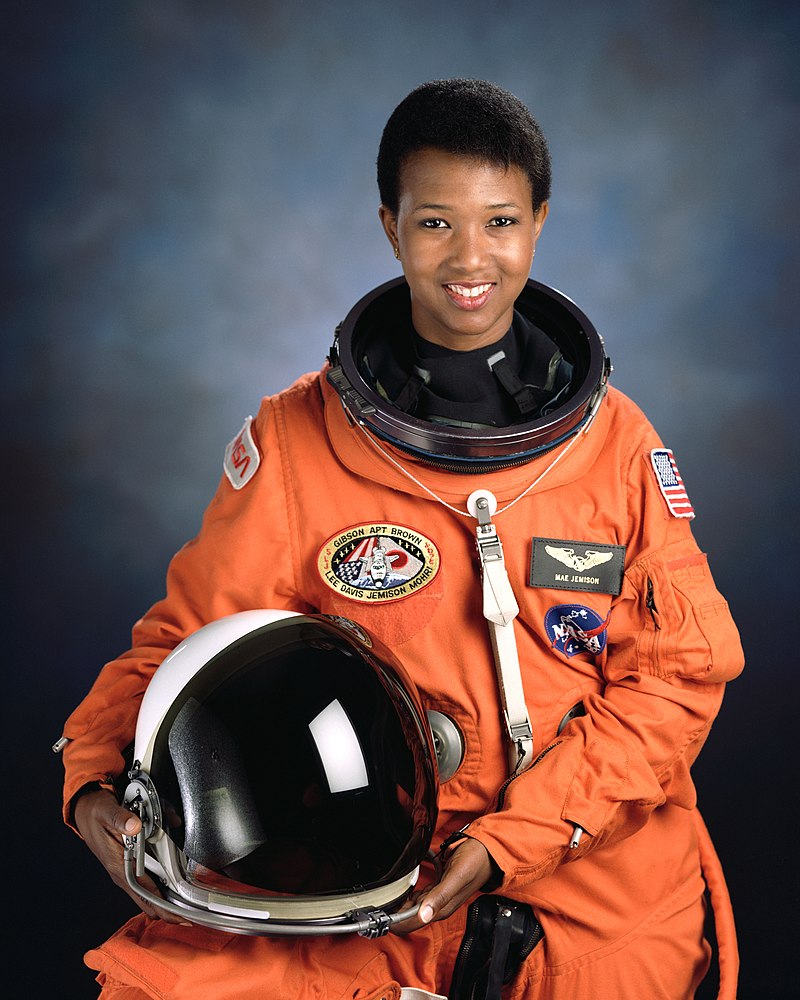
Meet Dr. Mae Jemison: The First Black Woman in Space
Published on February 24, 2023
In support of Black History Month, we’re pleased to feature Dr. Mae Jemison, a Chicago native who made history by becoming the first Black woman to travel in space.
By Dave Lifton (@daveeatschicago)
In the early days of the U.S. space program, an archetype emerged for the people NASA chose to serve as test pilots, then as astronauts. These new American heroes, including Chuck Yeager, Alan Shepard, and John Glenn, had flown in World War II and Korea. They had crew cuts and square jaws, and their adventures captured the public’s imagination. They had, to use the title of Tom Wolfe’s book about them, the “right stuff.”
They were all white men.
For NASA’s first 25 years, all American astronauts fit that mold. Then, Sally Ride became the first American woman in space in June 1983. A few months later, Guion “Guy” Bluford Jr. became the first African American in space.
Enter Dr. Mae Carol Jemison, who was born in Alabama in 1956, but her family moved to Chicago three years later. As a child, she was captivated by the Apollo missions, and watched along with the rest of the world when Apollo XI landed on the Sea of Tranquility on July 20th, 1969.

“I was that girl glued to the B&W television set watching humans on the moon,” she tweeted on the 50th anniversary of the moon landing. “Something that had been the very definition of impossible, now was a stepping stone to just how much more was possible.”
But the closest she came to seeing anyone who looked like her in outer space was Lt. Uhura, the character played by Nichelle Nichols on Star Trek. After graduating from Morgan Park High School in 1973 at the age of 16, Jemison went to Stanford University, where she graduated with a B.S. in Chemical Engineering and a B.A. in African and Afro-American Studies. Four years later, she graduated Cornell University’s medical school and spent two years as a doctor in the Peace Corps.
However, Nichols’ influence in Jemison’s life extended beyond the television. In the 1970s, the actress, who grew up just outside Chicago in Robbins and attended Englewood High School, worked with NASA to bring women and people of color into the program to become astronauts. Sally Ride and Guy Bluford were part of Nichols’ first recruiting class.
Seeing Ride make that flight convinced Mae Jemison that she, too, could go into space. Jemison applied to the astronaut program in 1985, but the explosion of the space shuttle Challenger—the same spacecraft on which Ride and Bluford flew—in January 1986 temporary halted NASA’s space program. She tried again in 1987 and was one of 15 accepted applicants.
Upon completion of her training in 1989, she was named a Mission Specialist on STS-47. Three years later, on Sept. 12, 1992, Dr. Mae Jemison climbed aboard the Endeavor and made history. Her role on the eight-day mission was to conduct experiments on motion sickness, bone loss in space, and frog fertilization.
Midway through the journey, she addressed a group of students from Morgan Park High School who had gathered at the Museum of Science and Industry. The Endeavor orbited the Earth 127 times before landing safely at the Kennedy Space Center.
A month later, she returned to Chicago, where it was declared Mae C. Jemison Day. The ceremony was held at the UIC Pavilion and attended by 8,000 schoolchildren and Nichelle Nichols.
Jemison left NASA in 1993. Shortly thereafter she brought her time at NASA full circle by becoming the first real-life astronaut to appear on an episode in the Star Trek franchise. LeVar Burton, who starred as Lt. Cmdr. Geordi La Forge on Star Trek: The Next Generation, read about Jemison’s story and asked her to be on an episode called “Second Chances,” his directorial debut. She appeared in one scene as Lt. Palmer, and Burton invited Nichols onto the set for the event.
Since then she’s founded a consulting group, taught at Dartmouth College and Cornell University, and launched numerous initiatives related to science education, particularly in minority communities. Dr. Jemison’s memoir, Find Where the Wind Goes, was published in 2001.

The Adventure starts when you say it does.
All eATLAS Adventures are designed and built by experienced eATLAS Whoa!Guides. They're always on. Always entertaining. And always ready to go.
Check out our Adventures!